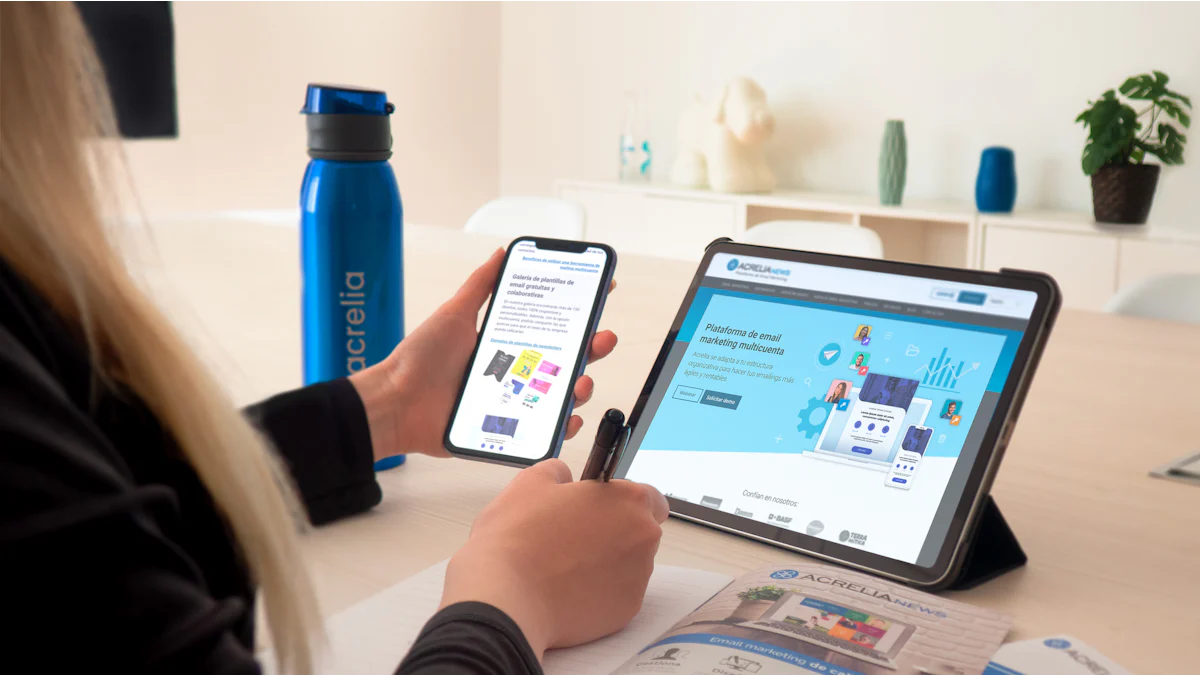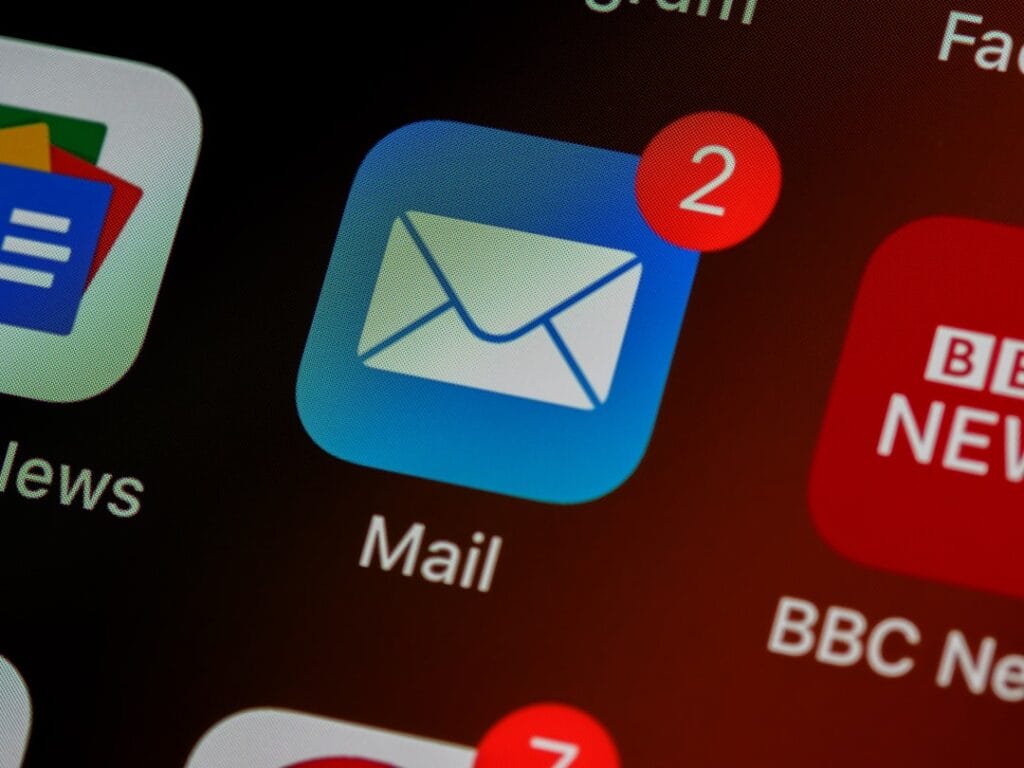In the world of sale, prospecting sequences by email play a crucial role. You may be wondering how many emails send to maximize your chances of success. A well -calibrated sequence can triple your response rate, from 9 % to 27 % with 4 to 7 emails. By customizing your emails, you can increase the opening rate by 30 % . Effective-effective-prospection email allows you to engage your prospects in a relevant and personalized manner, thus increasing your chances of conversion.
Understanding the prospecting sequence
Definition and objectives
What is a prospecting sequence?
A prospecting sequence is a series of emails sent to potential prospects to engage them and convert them into customers. You use this method to make initial contact and maintain the prospect's interest. Each email in the sequence has a specific purpose, whether it's to introduce your product, respond to objections, or provide a demo. By integrating a well-structured email-prospecting-sequence, you can increase your chances of success.
Why is it crucial for sales?
The prospecting sequence plays an essential role in the sales process. It allows you to remain present in the spirit of the prospect without being intrusive. A well executed sequence can triple the response rates , as indicated by prospecting experts by email. By multiplying the contact points, you increase the probability that the prospect will respond positively to your offer. Effective-sequence-prospection email constitutes a powerful lever to expand your customers and stimulate your sales.
↗️ Discover in video how Magileads can take your agency to the next level:
Components of an Effective Sequence
Types of emails to include
To maximize the effectiveness of your sequence, you should include different types of emails. Here are some examples:
Introductory email : Introduce yourself and briefly explain the reason for your contact.
Follow-up email: Remind the prospect of your previous email and offer added value.
Testimonial Email : Share success stories from satisfied customers.
Special offer email : Offer a limited offer to encourage action.
By diversifying the types of emails, you maintain the prospect's interest throughout the email-prospecting-sequence.
Timing and frequency of shipments
The timing and frequency of sending is crucial to avoid overwhelming the prospect. You should space your emails out over several weeks. For example, start with an introductory email, then send a follow-up a few days later. Follow up with a testimonial email the following week. This approach helps maintain interest without being too pushy. A well-calibrated email-prospecting-sequence respects the pace of the prospect while maximizing the chances of conversion.
Factors influencing the number of emails
Nature of the product or service
Product complexity
The complexity of your product directly influences the number of emails in your email-prospecting-sequence. A complex product requires more explanation. You must send several emails to detail its features and benefits. Each email should address a specific aspect of the product. This helps the prospect understand how your product meets their needs. A well-structured sequence helps dispel doubts and strengthen the prospect's confidence.
Typical sales cycle
The sales cycle of your product also determines the length of your email-prospecting-sequence. A long sales cycle requires more touchpoints. You need to maintain the prospect's interest over an extended period of time. Send emails at regular intervals to stay top of mind with the prospect. A short sales cycle, on the other hand, requires a more concise sequence. Adapt the number of emails based on the typical length of your sales cycle to maximize efficiency.
Prospect behavior and preferences
Analysis of response data
Analyzing response data helps you adjust your email-prospecting-sequence. Observe open and click-through rates to understand what’s working. If an email generates few responses, modify its content or timing. The data also tells you how many emails are needed to engage your prospects. Use this information to refine your strategy and increase your chances of success.
Lead segmentation
Lead segmentation is crucial for an effective email-prospecting-sequence. Divide your prospects into groups based on their behaviors and preferences. Adapt the content of your emails to each segment. For example, a prospect interested in a specific feature will receive emails focused on that aspect. This personalization increases engagement and improves conversion rates. A well-segmented sequence better meets the expectations of each prospect.
How to determine the optimal number of emails
To optimize your email-prospecting-sequence, you must determine the ideal number of emails to send. This section walks you through the essential steps to achieve this.
Analyze historical data
Analyzing historical data is crucial to understanding the effectiveness of your email-prospecting-sequence.
Open and click rates
Start by reviewing the open and click-through rates of your previous emails. These metrics show you prospects’ initial interest in your messages. A high open rate means your email subject line is attractive. A high click-through rate indicates that the content of your email encourages action. Compare these rates for each email in your sequence. This will help you identify the emails that most captivate your prospects.
Conversion rate
Another key indicator is the conversion rate. He measures the number of prospects that take action after receiving your emails. Analyze the conversion rates for each email in your sequence. An email with a high conversion rate is effective in transforming interest into action. By comparing the opening and conversion rates , you can adjust your-sequence-prospection email to maximize the results.
Test and adjust
Testing and adjusting your strategy is essential to refining your email-prospecting-sequence.
A/B testing
A/B testing is an effective method for testing different versions of your emails. Create two versions of each email with variations in content, object or design. Send them to similar segments on your list of prospects. Compare the performance of the two versions in terms of opening and conversion rate . This approach allows you to identify the elements that best work and optimize your sequence.
Adjustments based on results
After analyzing your test results, adjust your email-prospecting-sequence accordingly. If an email isn't generating the expected results, change its content or timing. Sometimes a simple change in the subject line or call to action can make a big difference. Keep testing and adjusting until you find the optimal combination that engages your prospects and maximizes your conversions.
Strategies to Maximize Email Effectiveness

To maximize the effectiveness of your email-prospecting-sequence, it is essential to focus on personalization and relevance, as well as email writing and design. These strategies will help you capture your prospects' attention and increase your conversion rates.
Personalization and relevance
Use of customer data
You must use customer data to customize your emails. By integrating specific information on the prospect, you make each message more relevant. For example, use fusion tags to insert the recipient's name or details on your preferences. This approach increases the opening rate and commitment. Personalized emails show that you understand the needs of your prospects, which strengthens their interest in your offer.
Adaptation of the message to the prospect
Adapt the content of each email based on the reactions and behaviors of your prospects. If a prospect shows interest in a particular aspect of your product, focus on that element in future communications. This personalization improves the relevance of your email-prospecting-sequence and increases the chances of conversion. By adjusting your message, you demonstrate that you are attentive to the specific needs of each prospect.
Writing and design of emails
Tips for an eye-catching object
The object of your email plays a crucial role in the opening of your messages. Use personalized object lines to capture the attention of your prospects. A well -designed object line can significantly increase the opening rate. Avoid generic sentences and opt for formulations that arouse curiosity or offer added value. A catchy object is the first step to engage your prospects in your sequence-prospection email.
Importance of an attractive design
The design of your emails also influences their effectiveness. An attractive and professional design reinforces the credibility of your message. Use high-quality images and clear formatting to make your emails visually pleasing. Make sure the design is consistent with your brand and easy to read. Good design encourages prospects to read your entire email and take action. By taking care of the appearance of your emails, you maximize the impact of your email-prospecting-sequence.
Common mistakes to avoid

In your email-sequence-prospecting strategy, certain errors can harm your effectiveness. Here's how to avoid them to maximize your results.
Over-sending emails
Consequences of too much email
Sending too many emails can quickly become counterproductive. You risk submerging your prospects, which can lead them to ignore your messages or, worse, to unsubscribe. An excess of emails can also harm your brand reputation. Prospects can perceive your business as intrusive, which can reduce their interest in your offers. Maintain a balance between the frequency of shipments and the relevance of the content to avoid these pitfalls.
Warning signs to watch out for
To avoid over-sending, watch out for certain warning signs. A high unsubscribe rate or an increase in spam complaints indicates that you are sending too many emails. Also monitor open and click-through rates. A drop in these indicators can signal that your prospects are losing interest in your messages. Adjust your strategy based on this data to keep your prospects engaged.
Lack of follow-up
Importance of follow-up after the sequence
Following up after an email sequence is crucial to turning initial interest into concrete action. Without tracking, you risk losing conversion opportunities. Effective follow-up shows your prospects that you are attentive to their needs and ready to support them in their purchasing process. This strengthens the relationship of trust and increases your chances of closing a sale.
Effective tracking techniques
For successful tracking, use proven techniques. Send a thank you email after the sequence to express your gratitude and remind you of your availability. Offer additional content, such as case studies or testimonials, to reinforce the prospect's interest. Also use personalized phone calls or messages to establish direct contact. These tracking techniques help you maintain engagement and maximize conversions in your email-prospecting-sequence.
To conclude, you must remember a few key points to optimize your-sequence-prospection email. A well -calibrated sequence, between 5 and 10 emails, can triple your response rates. Continuous adaptation is crucial. You must adjust your emails according to performance data and A/B tests . This allows you to constantly improve your campaigns. Finally, do not hesitate to test and optimize your sequences. This approach will help you maximize the commitment and conversions of your prospects.
—————————
Magileads is prospecting automation software that allows you to easily manage all the complex aspects of your marketing processes.
Test Magileads for free in 14 days. Click here .
Or book a demo to see how it works. Click here .





